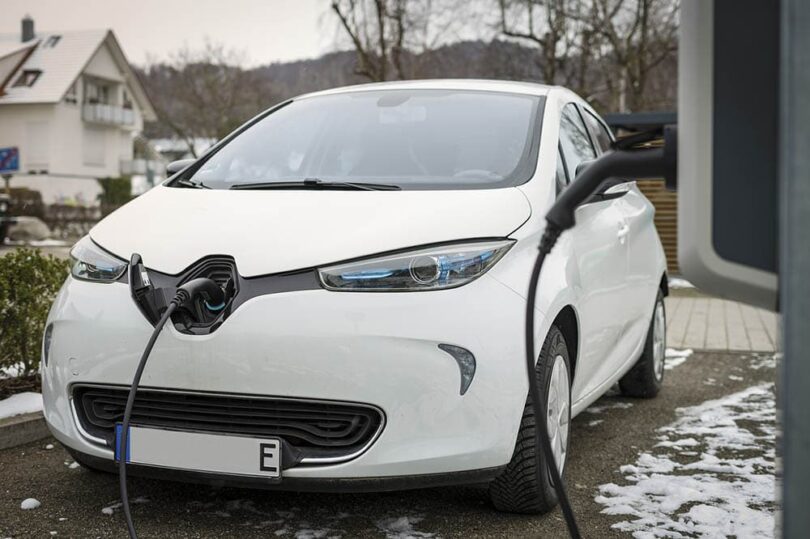11 Electric Car Statistics & Facts in Australia (With Infographic)
-
Ed Malaker
- Last updated:

Note: This article’s statistics come from third-party sources and do not represent the opinions of this website.
Electric cars are a huge part of the plan to improve the environment. It will help lessen the usage of fossil fuels that increase greenhouse gases, damage the ozone layer, and contribute to global warming. Electric cars don’t have the emissions that gas-fueled cars do, and modern technology continually helps them get more miles per charge.
Many countries have been buying electric cars for a while now, but they are not super common in Australia. Still, if you’re in the country and are thinking about purchasing one of these cars, keep reading as we look at the statistics and facts to see how they have been performing and if they are worth the hype.
Click below to jump ahead:
The 11 Electric Car Statistics in Australia
- General Motors introduced the first electric car.
- There are over 3 million electric cars on the road.
- Norway has the most electric cars on the road.
- Manufacturers expect electric cars to make up half the market by 2030.
- Global electric car sales have increased almost 2% since 2019.
- Electric vehicles make up only a fraction of the cars in Australia.
- Australian electric car sales increased in 2019.
- Australia ranks low for electric car use.
- There will soon be more electric vehicle models available in Australia.
- Australia has over 3,000 charging stations.
- The number of available chargers in Australia is increasing.

General Electric Car Statistics
1. General Motors introduced the first electric car.
(Budget Direct)
General Motors was the first car manufacturer to produce an electric car, in 1996 with its EV1 model. Tesla made several advancements and released its first electric vehicle in 2008, which used rechargeable lithium-ion batteries.

2. There are over 3 million electric cars on the road.
(Budget Direct)
Current reports suggest that since 2020, more than 3 million electric cars have been operating globally, with that number expected to increase dramatically over the coming decade.
3. Norway has the most electric cars on the road.
(Budget Direct)
Norway has the most electric vehicles on the road by far, with reports stating that more than 10% of its cars use battery power. The nearest competitor is the Netherlands, with almost 2% of its vehicles using electric power.

4. Manufacturers expect electric cars to make up half the market by 2030.
(Bloomberg)
Due to the extreme push over the last several years to be more environmentally friendly, many manufacturers believe that electric vehicles will make up more than 50% of the market for most major retailers by 2030, especially in America, Japan, and China. Sales in western Europe should also be quite high at about 49%.
5. Global electric car sales have increased almost 2% since 2019.
(Electric Vehicle Council)
Though many other markets have suffered from low sales due to the COVID-19 pandemic, war, and supply issues, electric vehicle sales have continued to increase. In fact, reports show that electric vehicles make up 4.2% of light vehicle sales, which is up from 2.5% in 2019.

Australian Electric Car Statistics
6. Electric vehicles make up only a fraction of the cars in Australia.
(Budget Direct)
While the number of electric cars in Australia is increasing, they currently only make up a tiny percent of the market, with the latest reports suggesting that 0.2% of Australian vehicles are electric.
7. Australian electric car sales increased in 2019.
(Budget Direct)
While the electric car started to become popular in Australia as early as 2011, it saw a major increase in 2019, when sales figures jumped from just over 2,000 car sales the year before to 6,718 in 2019, and the numbers continue to remain high.

8. Australia ranks low for electric car use.
(Budget Direct)
While Australia is purchasing more electric cars yearly, the overall number is still quite low compared to similar countries. Currently, many other countries, including the United States and China, are purchasing more vehicles. In fact, the Organisation for Economic Co-operation and Development (OECD) reports that out of 36 countries, only Mexico, Chili, and Turkey purchase fewer electric cars than Australia.
9. There will soon be more electric vehicle models available in Australia.
(Electric Vehicle Council)
In 2021, you could select from 31 electric vehicle models in Australia. However, that number will increase to at least 58 models by the end of 2022, to help provide more incentive to switch from fossil fuels.

Charging Statistics
10. Australia has over 3,000 charging stations.
(Electric Vehicle Council)
If you purchase an electric vehicle in Australia, you can charge it in any of the 3,000 locations that are available in the country as of 2021. 470 of the charging stations use high current, which means they can charge the car much faster so you can get on your way sooner.
11. The number of available chargers in Australia is increasing.
(Electric Vehicle Council)
Australia is working to increase the number of charging stations across the country. In the last 12 months, it has increased the number of standard chargers by 23% and the number of DC fast-charging stations by 24%, and it expects to keep adding stations at this rate.

Frequently Asked Questions About Electric Cars
- Incentives: Australia does not offer incentives to switch to electric vehicles like many other countries do, especially Norway, which offers financial and non-financial incentives for making the switch. Many Australian residents report that they might be willing to go electric if more incentives were in place. (Budget Direct)
- Government: The Australian Parliament has received low marks several years in a row for not delivering on its promise of a National Electric Vehicle Strategy. It has also failed to create incentives to help boost sales. (Electric Vehicle Council)
- Lack of Support: While the Australian government has recently begun adding more charging stations around the country to support electric vehicles, as it stands, each station will need to service 7.21 electric vehicles. One unit serving this many cars likely means long wait times at the pump. Australia still needs to install many more stations, or consumers will have difficulty getting the power that they need.

Conclusion
Electric cars are an important part of the global plan to help clean up the environment. While Australia was a little slow to get on board, the Australian Parliament has recently begun taking several steps to convince more of its residents to use electric vehicles. For example, it started installing more charging stations around the country and announced a large increase in the number of electric cars that will be available.
Related Reads:
Featured Image Credit: IsmaelMarder, Pixabay
Contents
